Bowers & Wilkins Zeppelin review: a wireless speaker wonder
The new Bowers & Wilkins Zeppelin updates a modern classic by delivering glorious sound quality in an eye-catching design

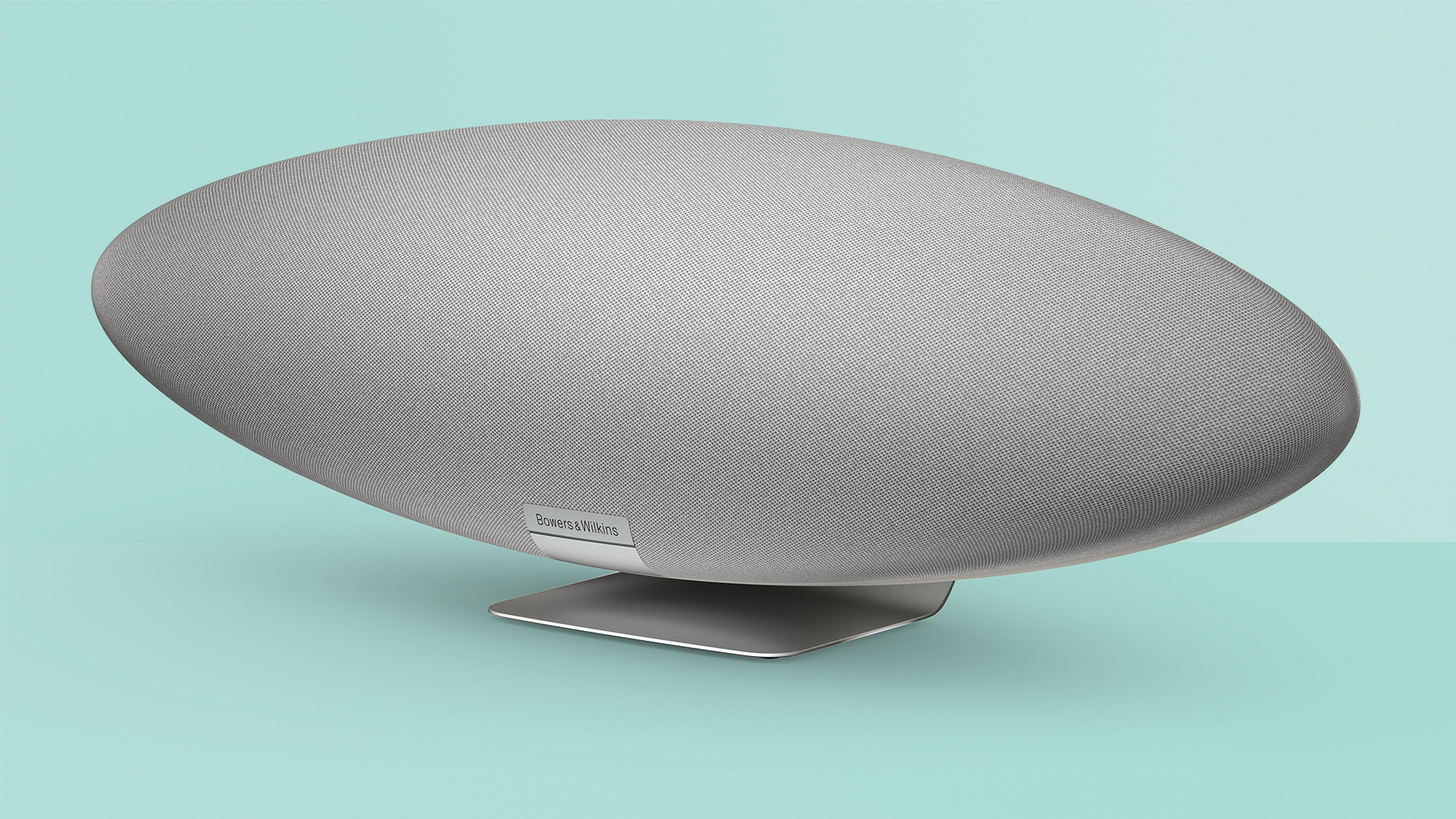

The new Bowers & Wilkins Zeppelin in the best in an illustrious line of speakers, delivering natural and expressive audio from a single unit. As long as you’re not banking on it delivering the ‘true stereo’ sound it claims it can, it's a marvel.
-
+
Revealing, expansive and convincing sound
-
+
Ample streaming options
-
+
Useful, usable control app
-
-
Doesn’t have the stereo separation it thinks it has
-
-
A physical input or two wouldn’t go amiss
-
-
Physically quite imposing
Why you can trust T3

This Bowers & Wilkins Zeppelin review feels like it’s been a long time coming. The original Zeppelin launched as an iPod dock in 2007, and it was a huge success (as well as being a huge iPod dock). Zeppelin Air and Zeppelin Wireless followed, but since 2015… nothing.
Bowers & Wilkins launched its Formation range since then, but while it’s a competitive range with options ranking among the best wireless speakers and best bookshelf speakers, it’s a long way from becoming the icon Zeppelin is.
Well, Zeppelin certainly used to be iconic. Happily, this version picks up right where the line left off, packing B&W's latest and greatest speaker technology into a shelf-friendly frame. Well, most shelves… it's not a small speaker.
But when you've got such impressive audio tech, borrowed from some of the most elite hi-fi gear on the planet that costs a lot more than the Zeppelin does, the size seems fair enough. And most important, it produces simply fantastic sound quality.
So let's dig into exactly what the Zeppelin does so well, and the areas that might mean it's not for you.
Bowers & Wilkins Zeppelin review: Price & release date
The Bowers & Wilkins Zeppelin is on sale now, and in the United Kingdom it’ll set you back £699. In America that translates to $799, while in Australia it’s priced at around AU$1,199.
That’s a premium price for what thinks itself a premium product, and it brings the Zeppelin into more-or-less direct competition with some successful and very well-regarded alternatives.
Naim’s Mu-so Qb2, for instance, has an impeccable reputation for a very similar price, while if you think the look of the Zeppelin is a bit tentative you can always consider Master & Dynamic’s profoundly odd (but also great-sounding) MA770, which costs a little more.
There's also the Sonos Five, which is a little cheaper, but has similar high-quality ambitions.
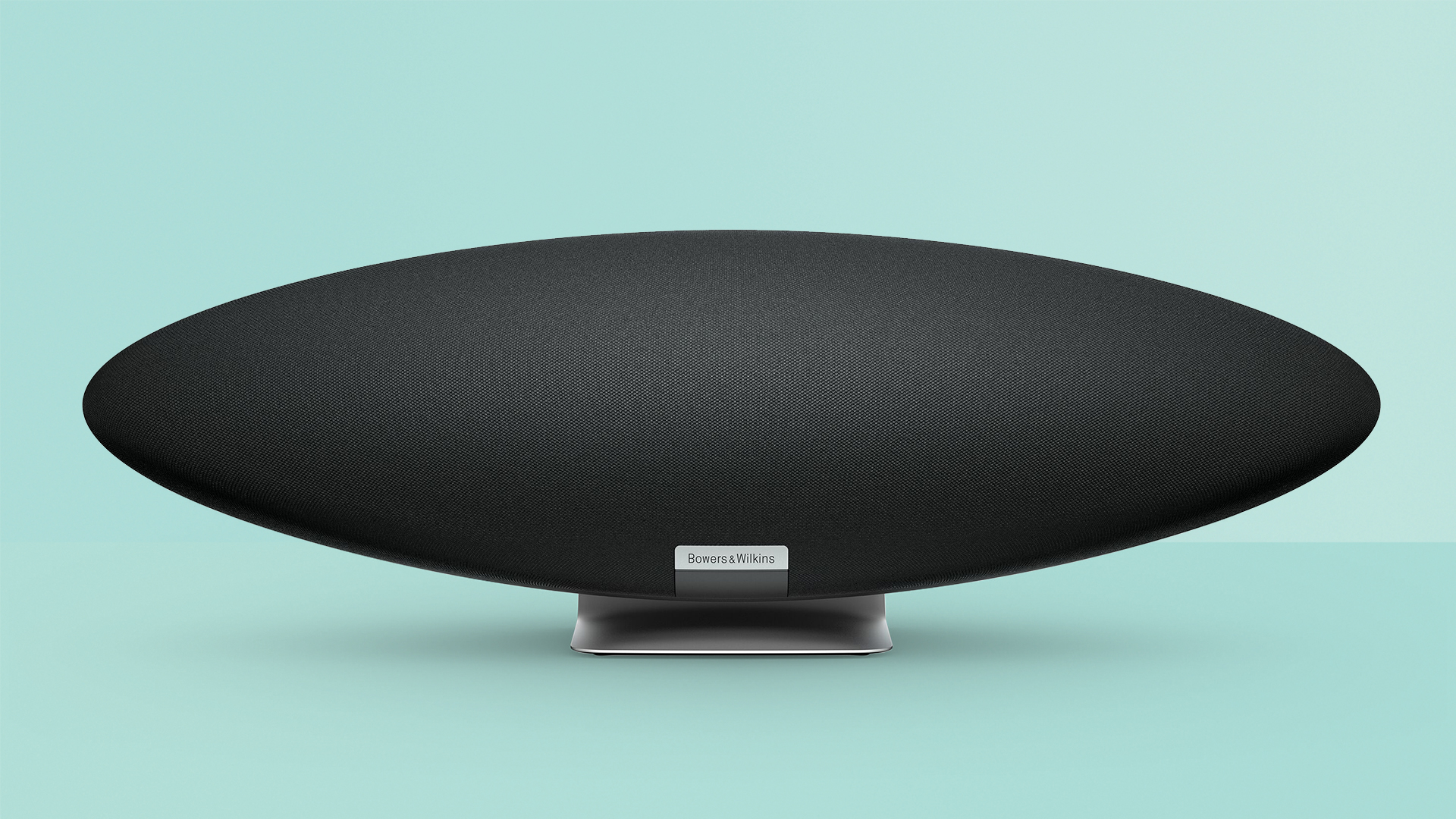
Bowers & Wilkins Zeppelin review: Features & what's new
As far as ‘what’s new’ goes, well, it’s all new despite looking very much like previous Zeppelin speakers. Inside and out, the Zeppelin has not so much been overhauled as begun again from scratch.
First and foremost, this is a high-resolution device. The onboard DAC is of 24bit/192kHz resolution, but is currently restricted to outputting at a maximum of 24bit/96kHz – although this is scheduled to change sooner rather than later, which will make the Zeppelin an even higher-res product than it already is.
(Also on the ‘to do’ list is multiroom functionality with other Zeppelins and/or member of the Formation range of wireless speakers. Support for AirPlay 2 and Spotify Connect multi-room streaming is already here.)
Audio information can be served in quite a few different ways. Bluetooth 5.0 connectivity includes compatibility with Qualcomm’s aptX Adaptive codec, and there’s the aforementioned Apple AirPlay 2 and Spotify Connect support. In addition, Bowers & Wilkins’ Music App (which is specifically discussed in the ‘design and usability’ section) allows you to integrate your streaming accounts from the likes of Amazon Music, Deezer, Qobuz and TIDAL, as well as services like Last.fm and SoundCloud. As it stands, only the hi-res tier from Qobuz is accessible via the app.
Once on board and DAC’d, the audio information is served up by a five-strong driver array powered by a total of 240 watts of Class D amplification. At each pointy end of the enclosure there’s a 25mm double-dome tweeter of the type Bowers & Wilkins debuted on its award-winning 600 Series range of loudspeakers.
Right in the middle there’s a 150mm subwoofer, and between it and each tweeter there’s a 90mm mid-range driver. These use the same Fixed Suspension Transducer technology as the company deploys on its range-topping and wallet-bothering 800 Series of speakers. The idea is to present a true and obvious sensation of ‘left’ and ‘right’ channel information as you more commonly experience from a pair of stereo speakers.
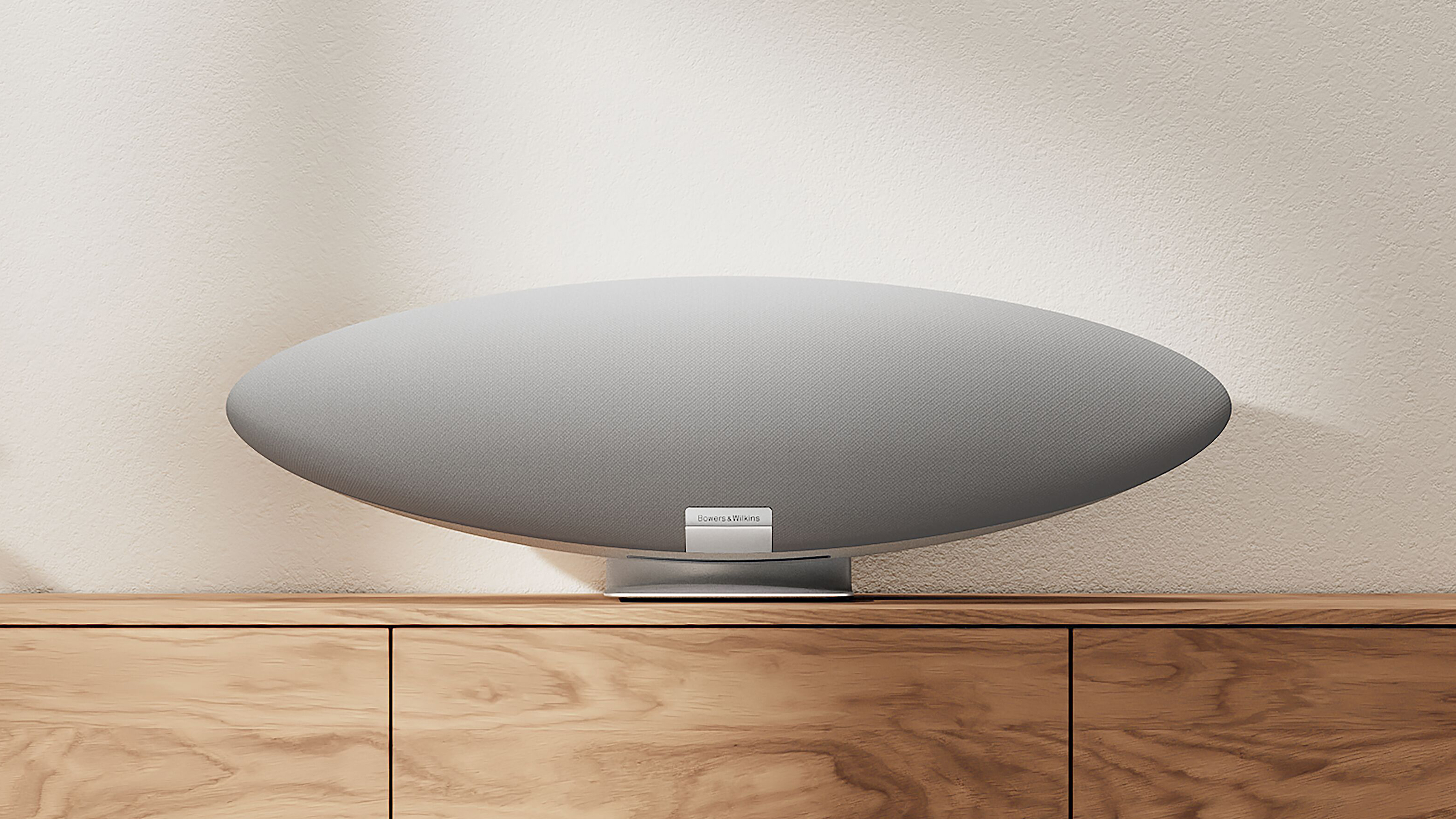
Bowers & Wilkins Zeppelin review: Performance
Give it the best stuff to work with – by which we mean some nice in formation-rich hi-res files from wherever you like to source them – and the Zeppelin gets virtually everything right. And, what’s more, in some style.
The tonal balance it strikes, for example, is really nicely judged. From the top of the frequency range (which is bright and attacking, but never uncouth) to the bottom (which is authentically deep, and properly disciplined where attack and decay of notes are concerned) it’s a smooth and coherent journey, with nothing overplayed and nothing understated. There’s a prodigious amount of detail unearthed, and even the briefest of transient information is identified and reported on. In some speakers this level of attention can come across as ‘prissy’, but the Zeppelin makes it all sound as natural and unforced as can be.
It’s in the midrange, though, that the Bowers & Wilkins really starts to set itself apart from its nominal competition. Its attention to detail and impressively convincing tonality packs every singer’s voice with character, and as a consequence they’re generally emotive and always communicative. And the Zeppelin allows them an airy little pocket of space in which to do their thing, even as it integrates a vocal into the wider musical picture.
Given the amount of power it can call on, it’s hardly surprising to find the Zeppelin well capable of dealing with big dynamic variations in a recording. But it’s equally adept when it comes to the more nuanced harmonic discrepancies in, say, a solo piano or a steel guitar string, which makes it one of the more revealing and insightful wireless speakers you can buy for less than four figures.
Really, about the only area where the Zeppelin doesn’t flat-out impress is where stereo separation is concerned – and, to be quite honest, if Bowers & Wilkins hadn’t made such a song and dance about its ‘true stereo’ credentials we doubt we’d be quite so picky. But the fact is that the presentation here, for all its spaciousness and impressive definition, doesn’t particularly escape the confines of the cabinet from which it emanates.
Definition is good, the unity and timing of a recording is never in doubt, and the soundstage that’s presented is easy to follow – but you’ll never be fooled into thinking you’re listening to anything but a single speaker.
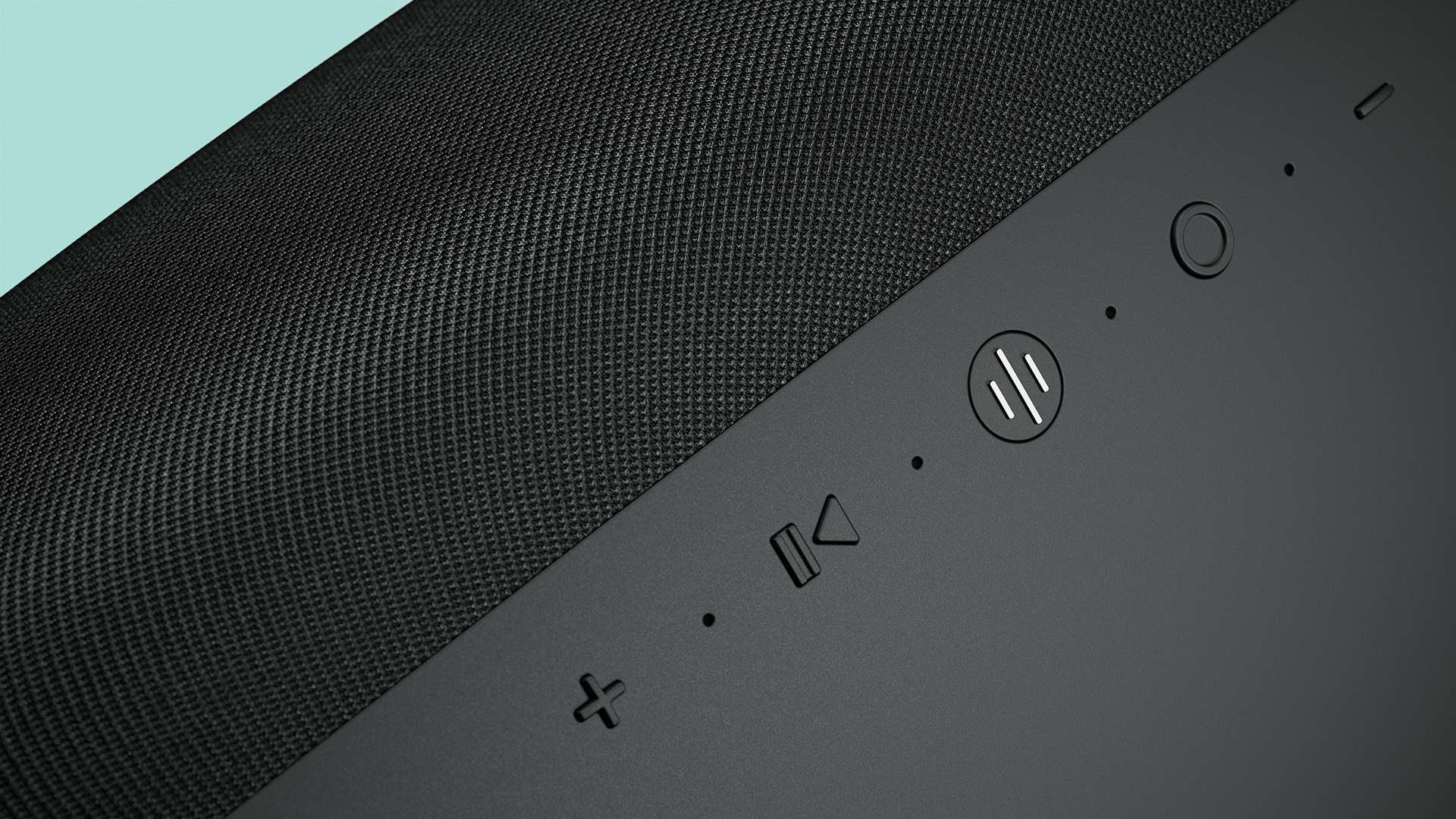
Bowers & Wilkins Zeppelin review: Design & usability
At 650x210x194mm and 6.5kg, the Zeppelin is one of the larger wireless speakers around – and, let’s not forget, it looks like a Zeppelin. So while its little metal stand doesn’t have all that much of a footprint, the speaker itself requires (demands, actually) quite a bit of breathing space.
It’s a beautifully made thing, though, flawlessly finished and available in what to us looks very much like ‘black’ or ‘grey’ but what turns out to be ‘midnight gray’ and ‘pearl grey’. No matter the finish you choose, though, this is a fairly imposing speaker.
Connectivity is all wireless; there’s a cutaway on the rear of the cabinet, but it’s home to just a service-only USB input and a figure-eight socket for power. The Zeppelin looks like the perfect candidate to be an occasional soundbar, but obviously Bowers & Wilkins doesn’t agree with us. There’s no HDMI input, and no physical inputs of any other kind either.
As far as usability goes, well, the Zeppelin has a number of options. There’s the Music App we’ve already mentioned, for starters: as well as the broad strokes of operability, it also offers some minor EQ adjustment and will, in time, be the place you set up your Zeppelin-based multiroom system.
There are a couple of physical controls on the rear of the speaker, too, or it can be operated using Amazon Alexa voice control. ‘Responsive’ is probably the most succinct way to describe how voice control is implemented here.
Bowers & Wilkins Zeppelin review: Verdict
It’s taken its sweet time, but the Zeppelin is finally back… and it’s better than ever. As long as you can find the space for a speaker of significant proportions, there’s very little downside to owning the Bowers & Wilkins.
Don’t go expecting it to present a sound as separated and three-dimensional as a pair of stereo speakers, and as long as you don't need any physical inputs, it represents money well spent for a modern streaming speaker.
Bowers & Wilkins Zeppelin review: Also consider
Bowers & Wilkins seems to want its wireless speakers to look like something. In the case of the Zeppelin it’s, well, a Zeppelin. In the case of the B&W Formation Wedge, it’s - what is it? Most of a lampshade. Part of a Christmas tree decoration? Whatever it is, it’s something – feel free to project your own image onto it.
While you do so, the Formation Wedge will get on with the job of giving you full-scale, potent and well-defined audio quality. It’s not quite as expansive a listen as its new Zeppelin relative, but it counters with some implacably punchy low-frequency presence and some extremely decorative wood serving as its rear panel.
Otherwise, the big competitor here is the Naim Mu-so Qb (2nd Gen), which is also a simply fantastic listen, and has a very similar speaker setup (a tweeter and mid-range angled in each direction, plus a big central woofer), but fits in a much more compact space. It also has more hi-res streaming options available to it today, and has physical inputs – but it lacks aptX Bluetooth. And the Zeppelin is better-looking overall (though the Mu-so Qb does have a large and tactile volume dial, which is always fun).
Sign up to the T3 newsletter for smarter living straight to your inbox
Get all the latest news, reviews, deals and buying guides on gorgeous tech, home and active products from the T3 experts
Simon Lucas is a freelance technology journalist and consultant, with particular emphasis on the audio/video aspects of home entertainment. Before embracing the carefree life of the freelancer, he was editor of What Hi-Fi? magazine and website – since then, he's written for titles such as Wired, Metro, the Guardian and Stuff, among many others. Should he find himself with a spare moment, Simon likes nothing more than publishing and then quickly deleting tweets about the state of the nation (in general), the state of Aston Villa (in particular) and the state of his partner's cat.
-
 Leaked AirPods prototype looks like Nothing... literally
Leaked AirPods prototype looks like Nothing... literallyAnd we are here for them
By Britta O'Boyle Published
-
 OnePlus Watch 3 lands in the UK with a flurry of freebies and a huge discount
OnePlus Watch 3 lands in the UK with a flurry of freebies and a huge discountThe new titanium-clad smartwatch brings 120-hour battery life, ECG health checks, and some serious launch offers
By Matt Kollat Published
-
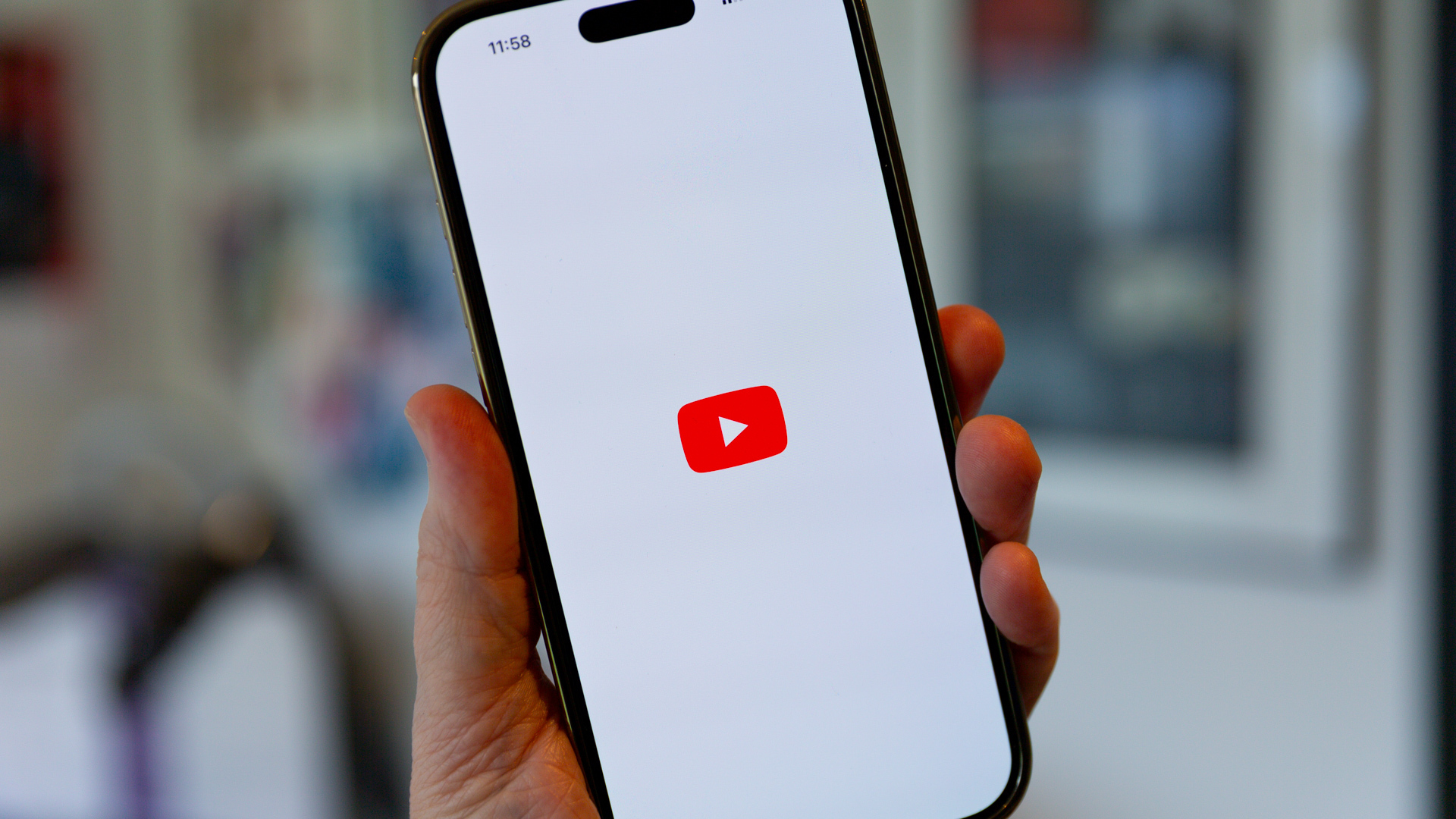 Future YouTube feature could put an end to your doomscrolling
Future YouTube feature could put an end to your doomscrollingAnd that's something we would love to see
By Britta O'Boyle Published